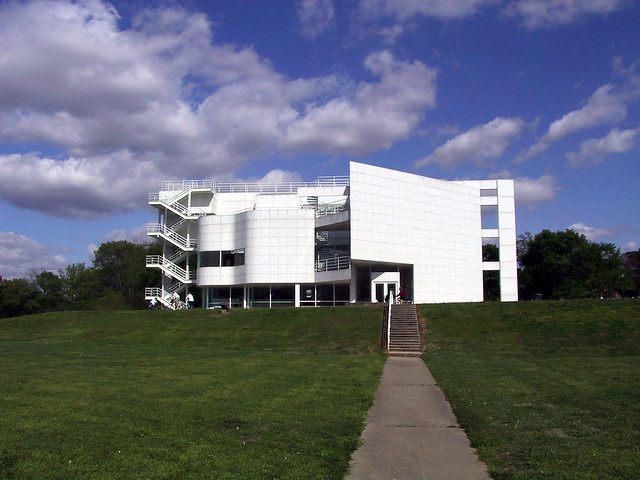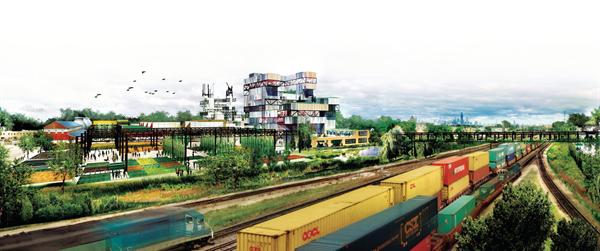Most home renovations don’t require trips to New York’s MoMA to look at original construction plans. But when you are working on one of architect Ludwig Mies van der Rohe’s best preserved buildings no stone is left unturned. In March, his Tugendhat Villa in Brno, Czech Republic, reopened after an $8.8 million, two-year reconstruction. Using family photographs, archival material, visiting Mies’ other buildings in the U.S. and Europe, the Tugendhat redesign team focused on, as Villa Director Iveta Cerna said “identifying authenticity.”
New Harmony Atheneum by Richard Meier
Jet Airliner by Josef Hoflehner
L’Enfant Plaza Coffer
Sydney Opera House
Halley Research Station – Halley VI
Halley Research Station, run by the British Antarctic Survey, is located on the Brunt Ice Shelf floating on the Weddell Sea in Antarctica. A design competition was launched by the Royal Institute of British Architects and the British Antarctic Survey in June 2004 for Halley VI which was won by Faber Maunsell and Hugh Broughton Architects. Halley VI is a structure which is jacked up on legs to keep it above the accumulation of snow with skis on the bottom of these legs, which allows the building to be relocated periodically.
Survey of Reaction: “Foreclosed: Rehousing the American Dream”
Reality Check: Developers React to MoMA’s Show, “Foreclosed: Rehousing the American Dream”:
But during a panel on March 8 at the museum sponsored by the Forum for Urban Design, two developers, an architecture professor, and a real estate lawyer reacted soberly to the adventurous and optimistic schemes. Though the panelists agreed that the foreclosure crisis will lead to major changes in suburban development, they all thought new patterns are less likely to be brought about by a revised American dream than by economic and demographic factors. And all said it would be very difficult to change zoning laws to permit denser new development patterns, especially in existing “inner-ring” suburbs.
Financing suburban architecture:
My main beef with the show is that it’s far too utopian and impractical. That’s par for the course when it comes to museum architecture shows, but I was hoping for more realistic proposals in this particular case, just because the foreclosure crisis is so real and urgent.
Dream Deferred: The Museum of Modern Art’s “Foreclosed” exhibit is long on art and short on reality.
Any honest attempt to fix the suburbs has to start with facing up to why so many Americans live in the suburbs in the first place, and who those Americans are. Suburban families are bigger than urban families; they like their space; and they like living in places where they’re a good distance from their neighbors and a long way indeed from people of other social classes.
Immortal Architecture – Competition Winner
The idea came from the program, where it mentioned to consider how your building would decay over time. I had a strong impulse to design something huge and monumental, an architecture that would become more like a geologic formation. And then I thought about how to exaggerate the natural processes; in this case, erosion and accumulation of runoff; and make them into something that people could benefit from. I had a hard time thinking of a better way to alleviate social problems than to ensure that everyone is well fed.
via Immortal Architecture- Competition Winner « Tesseract Competitions.
Video: The saga of Mies van der Rohe’s Farnsworth House
KCRW interviews Moby on LA architecture
Chances are, you know Moby best for his electronic dance music. But it turns out the eclectic-minded musician has another life, as an architecture buff who recently moved to LA and now writes a blog about buildings here he loves. The blog is called, simply, Moby Los Angeles Architecture Blog, and features his photos of local architecture—from commonplace courtyard apartments to iconic houses by Frank Lloyd Wright—as well as his musings on the urban environment. Frances Anderton talks to Moby about his love of architecture.











